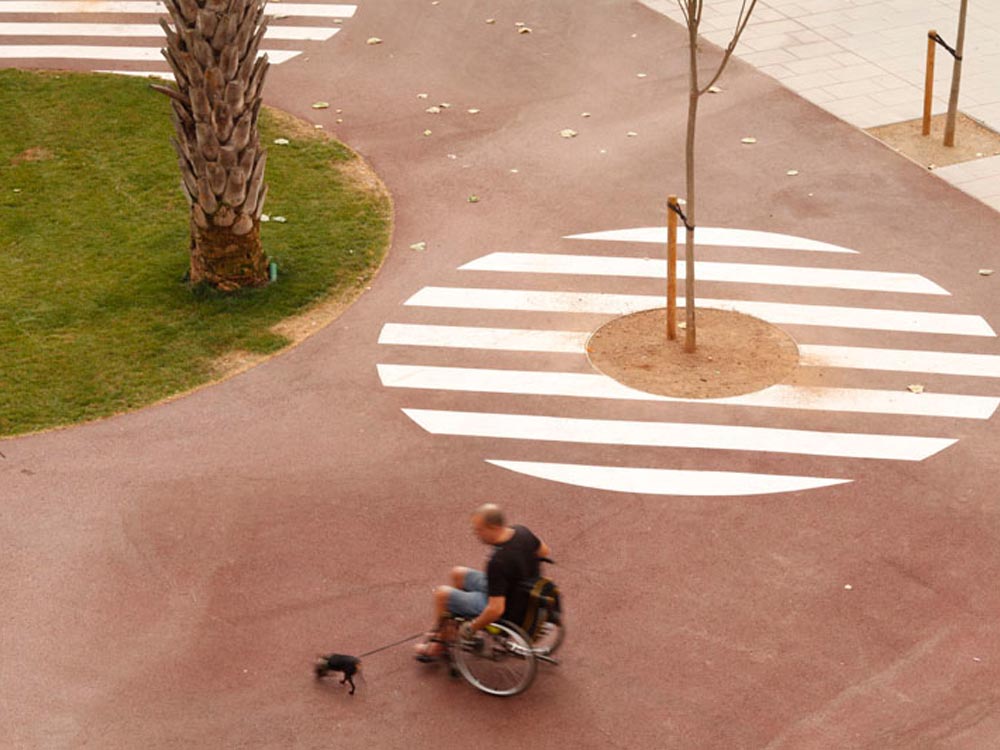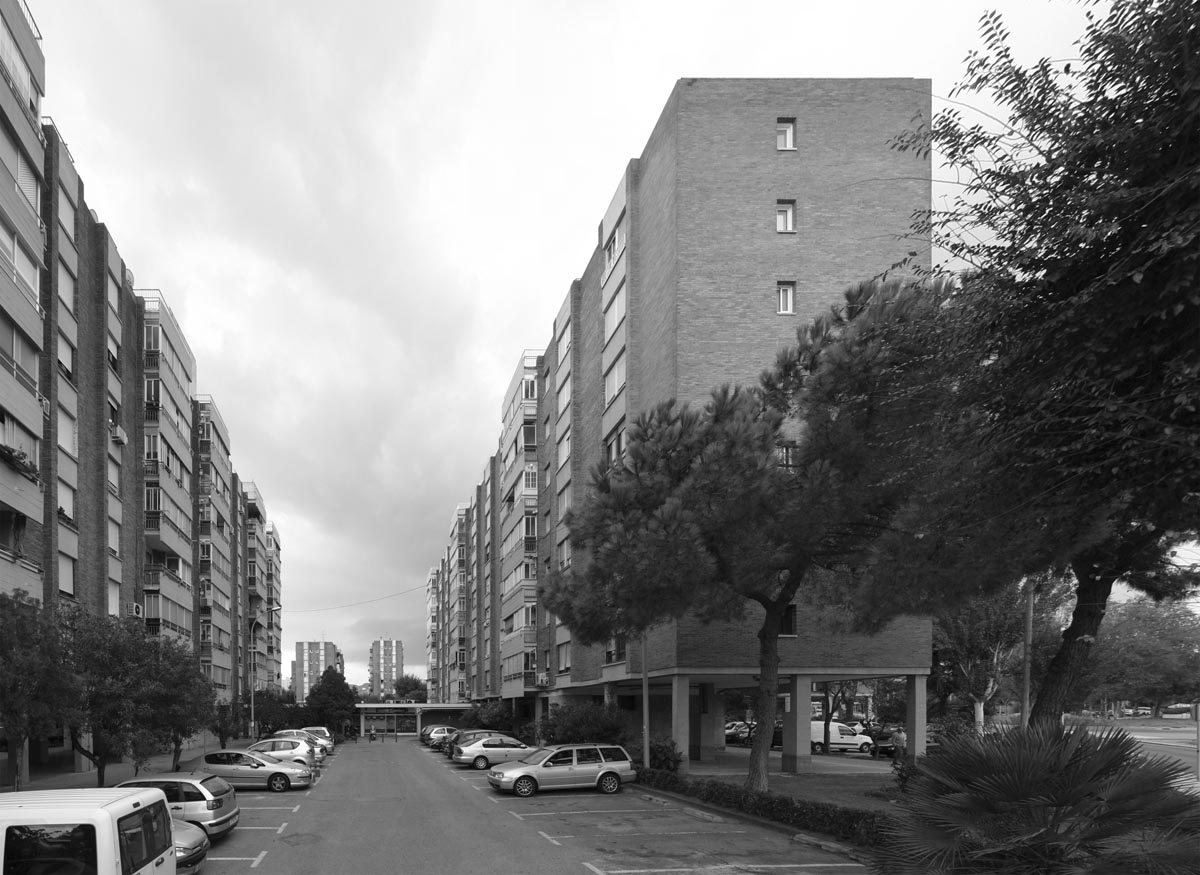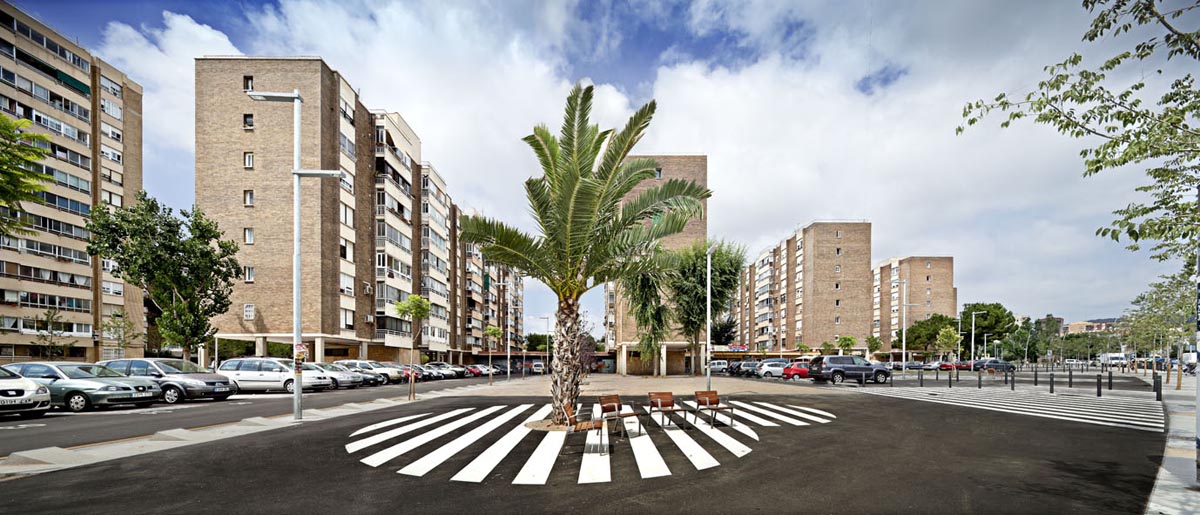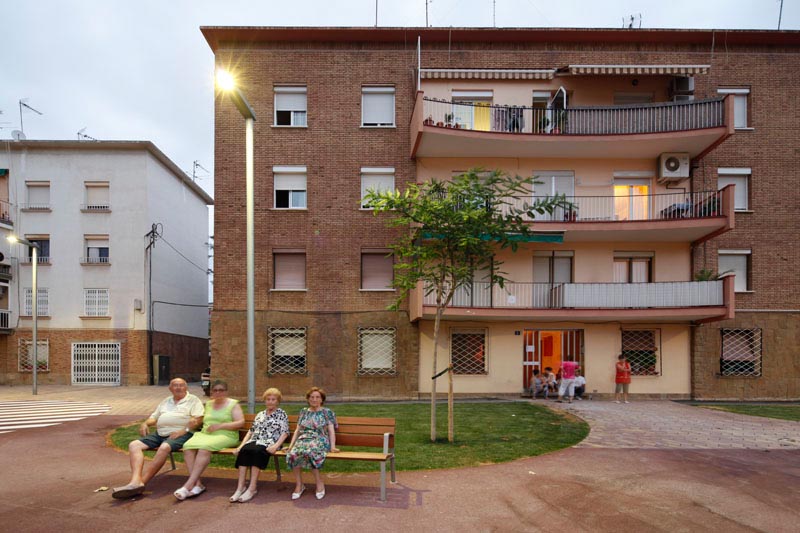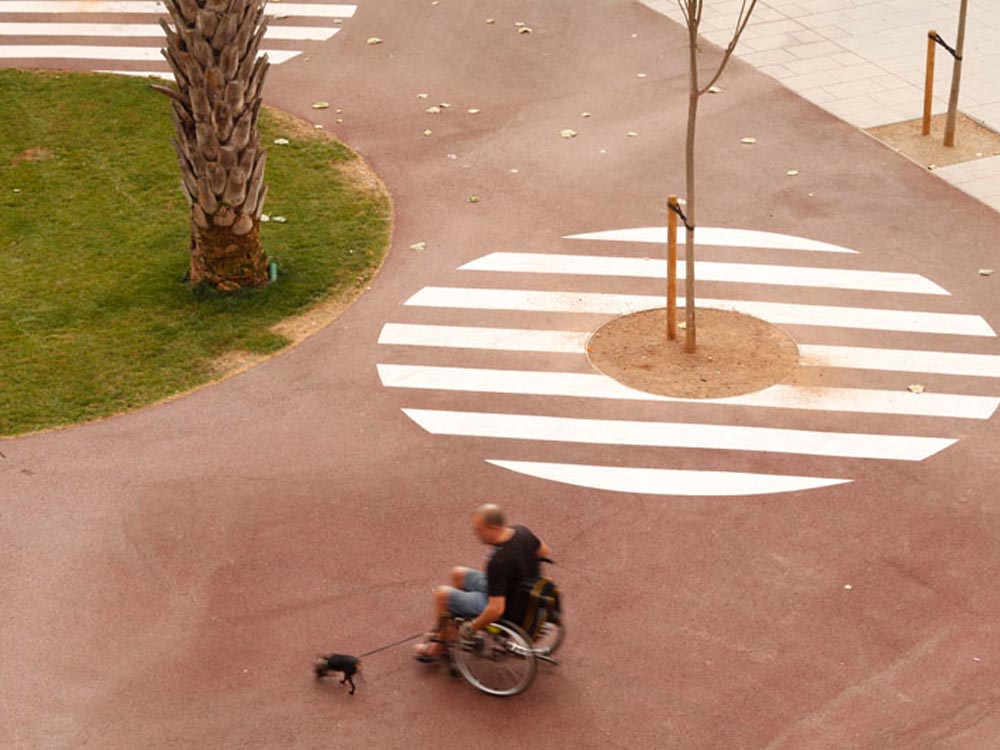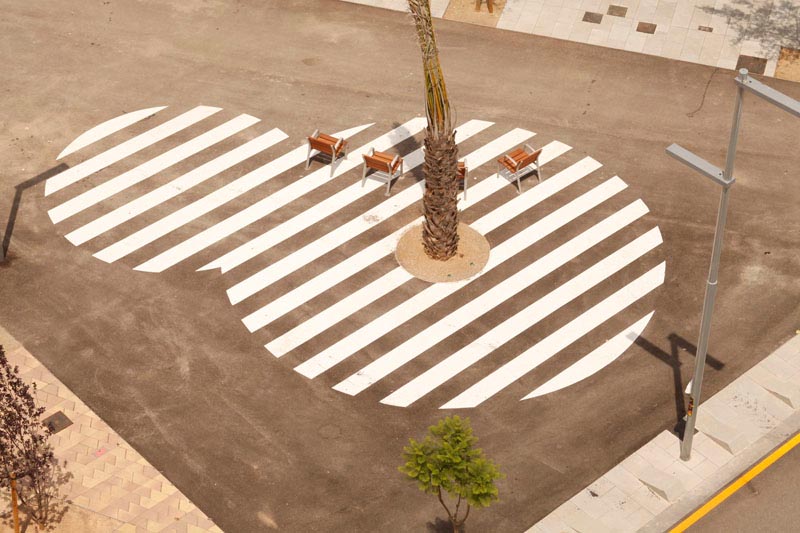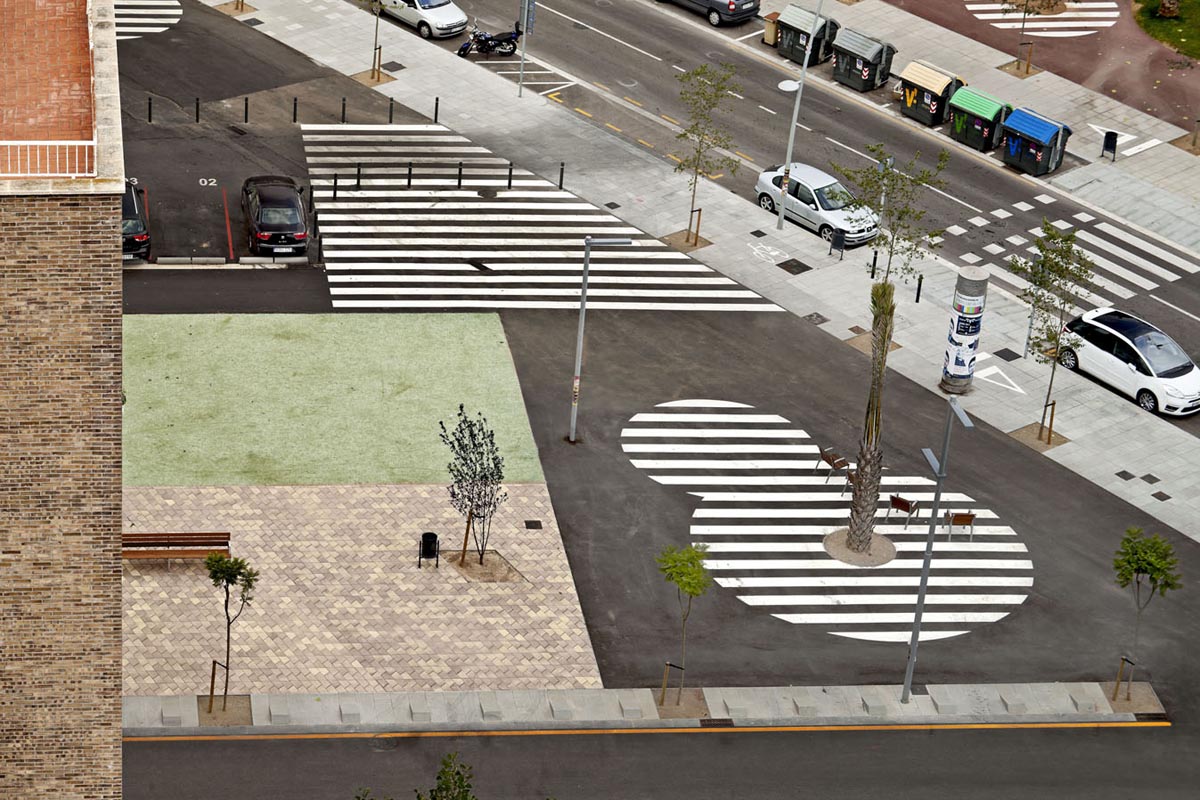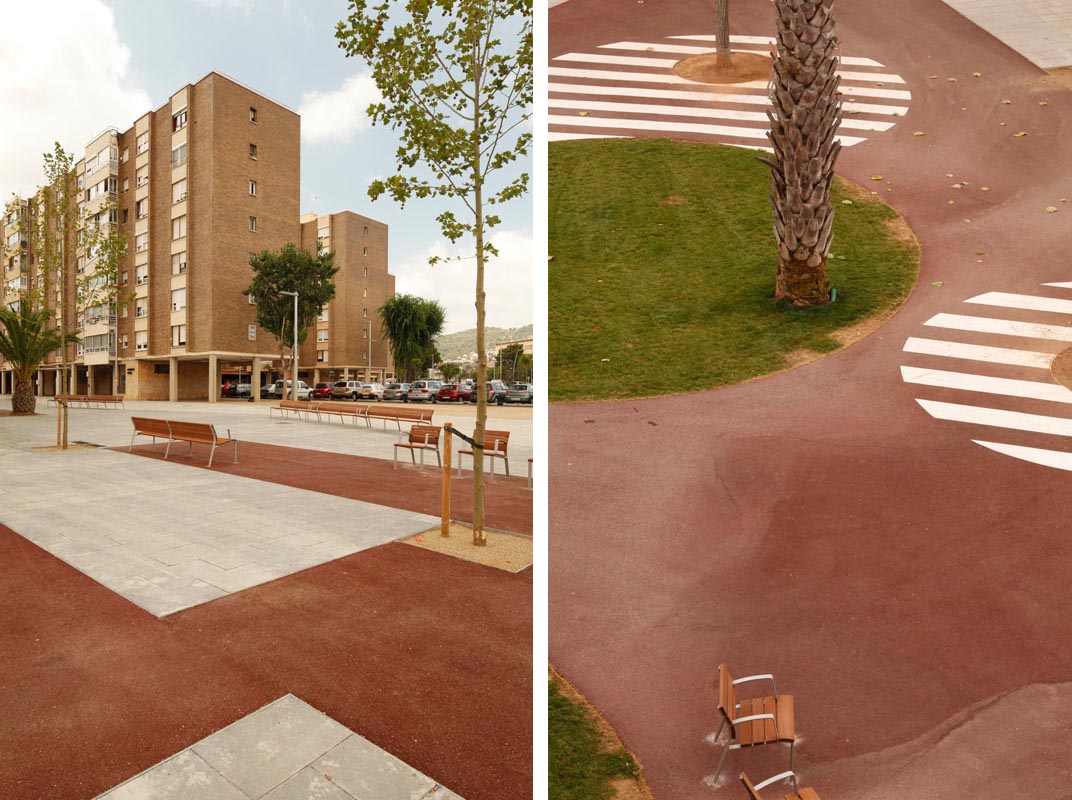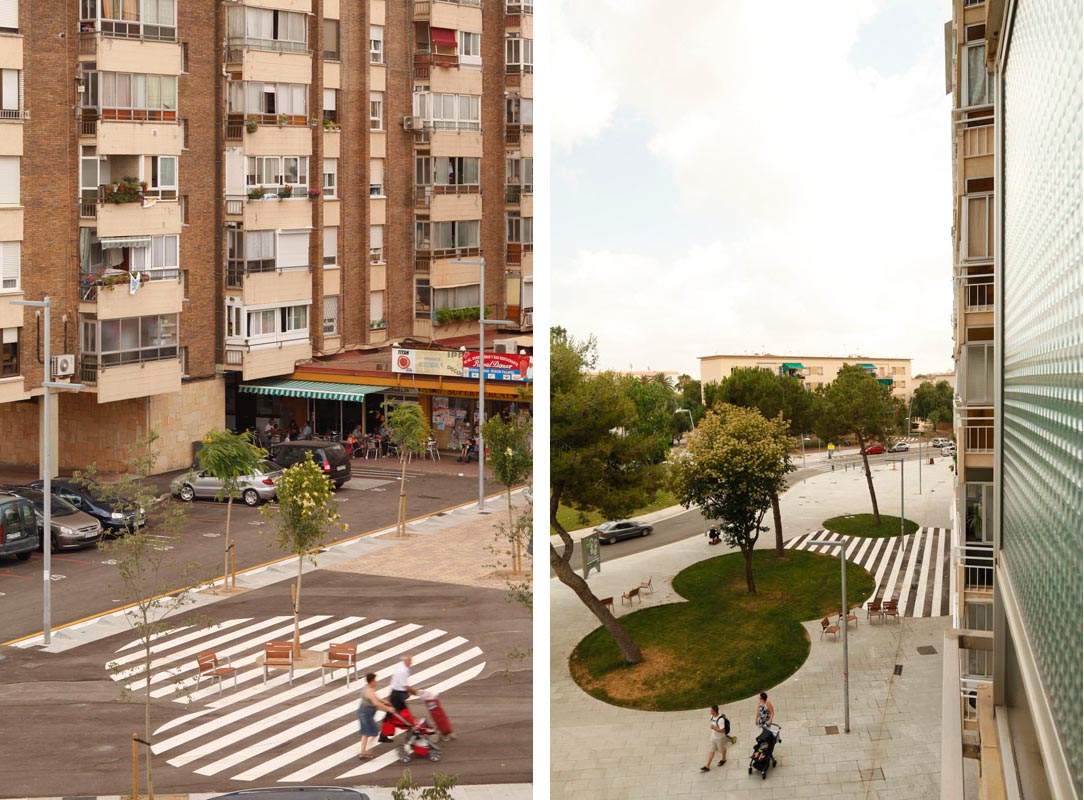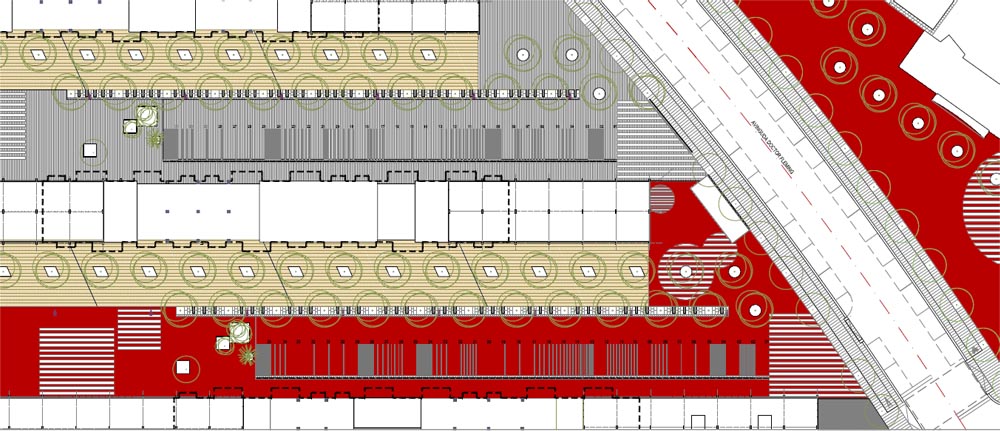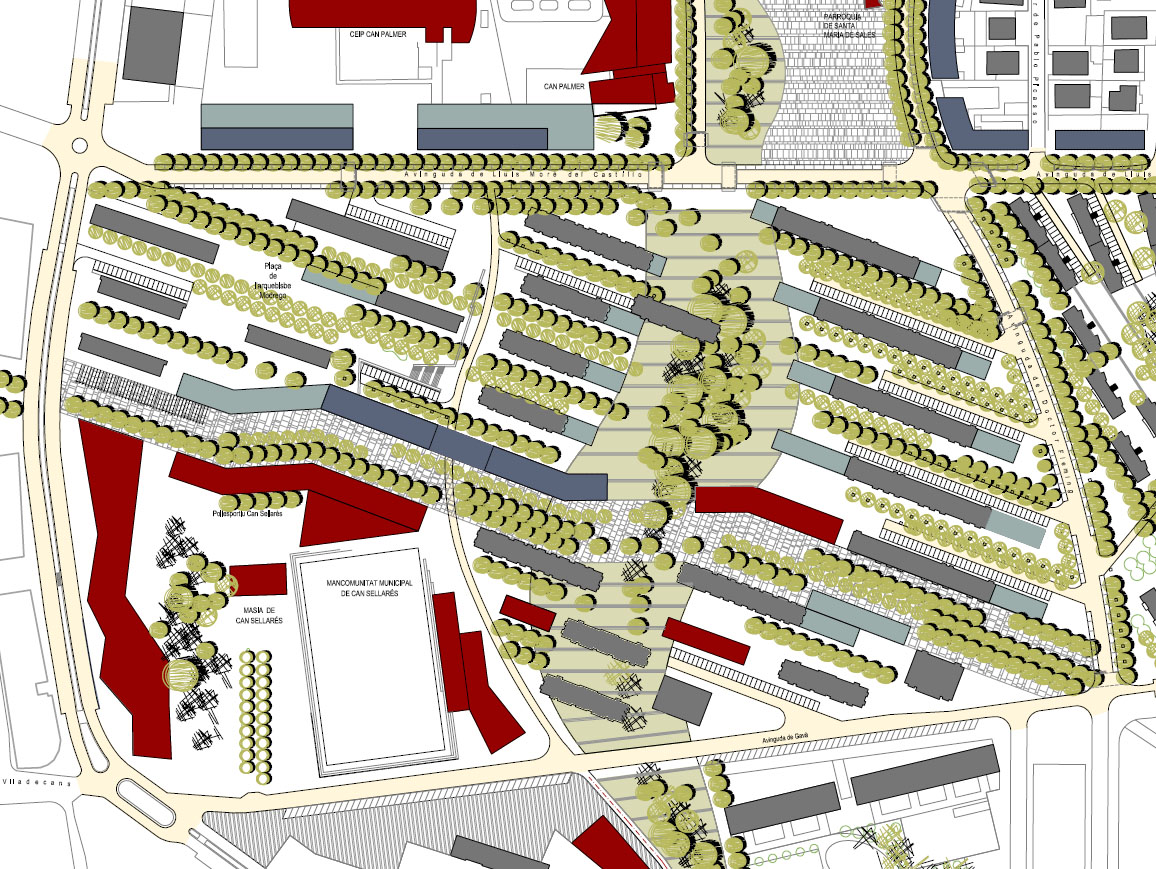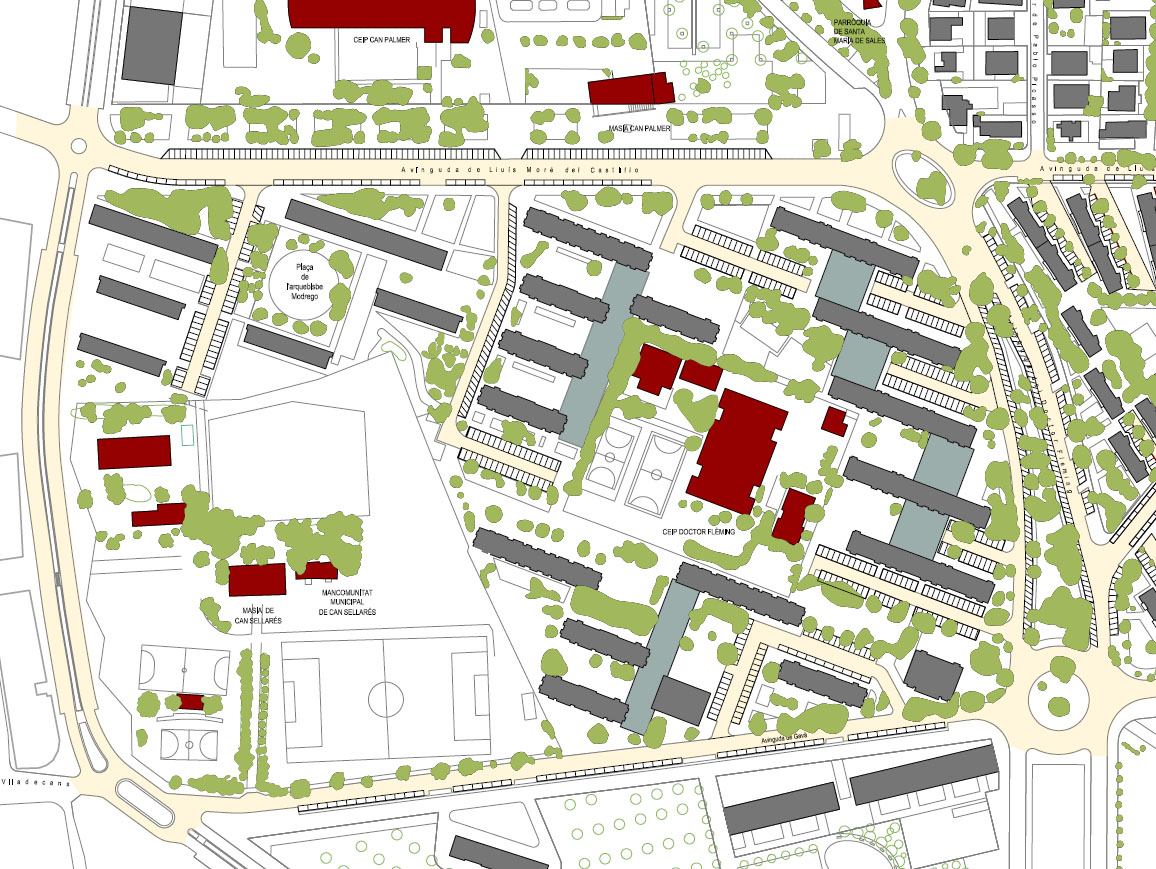Estado anterior
Los cultivos que rodeaban la masía de Can Sellarés, al sur de Viladecans, se edificaron en los años sesenta para responder a la demanda de vivienda de los numerosos inmigrantes que llegaban al área metropolitana de Barcelona. La masía, que hoy funciona como restaurante, dio nombre a un polígono residencial enclavado entre cuatro grandes ejes viarios. Dos de ellos siguen las líneas de escorrentía de la montaña, mientras que los demás, paralelos a la costa, garantizan la conexión del sector con el resto de Viladecans y los municipios vecinos.Si bien las vías perimetrales que definen este cuadrilátero son amplias y fluidas, pasaba todo lo contrario con las calles interiores del polígono. Todos los bloques, alargados y paralelos, siguen una directriz diagonal que los encara a mediodía. Sin embargo, los intersticios que los separan se interrumpían en las plantas bajas debido a la presencia de zócalos comerciales que unían transversalmente los edificios. La falta de fluidez de esos intersticios, junto con el hecho de que estaban poco cuidados y llenos de coches mal aparcados, los relegaba a la condición de meros espacios de paso y provocaba que la mayoría de los locales comerciales estuvieran desocupados.
Objeto de la intervención
En 2009, el Ayuntamiento de Viladecans aprobó un plan para mejorar la calidad de los espacios libres del polígono de Can Sellarés. Para tener efecto, la operación debía actuar también en suelo privado. Había que modificar la disposición de los comercios de las plantas bajas para corregir el efecto obturador que tenían sobre el barrio. Ello suponía expropiaciones, derribos y la construcción de nuevos comercios, de modo que en el presupuesto inicial, previsto en tres millones y medio de euros, debía ajustarse mucho la partida destinada a la urbanización de los espacios libres.Descripción
Las restricciones presupuestarias obligaron a proponer un proyecto más ambicioso que pretende crear una nueva plaza delante del vértice septentrional del cuadrilátero, fuera ya del propio ámbito del polígono. La nueva plaza, que debe ofrecer un espacio vestibular a la existente parroquia de Santa Maria de Sales y a futuros equipamientos, servirá para articular la relación entre Can Sellarés y otros barrios de Viladecans, como el Poblat Roca, Can Batllori, Alba-Rosa o Can Guardiola. A pesar de la necesidad de postergar la creación de la plaza, las obras de urbanización que han podido ejecutarse son coherentes con el proyecto. Más que como márgenes perimetrales, las vías que enmarcan el polígono se han entendido como líneas de sutura y, por lo tanto, se han renovado a ambos lados. Los zócalos transversales ocupados por los comercios preexistentes se han sustituido por establecimientos situados en las plantas bajas de los bloques, donde antes había porches umbríos.La superficie liberada por el derribo, junto con la ganada por el desbordamiento del ámbito de actuación, ha hecho aún más imperiosa la necesidad de austeridad en los trabajos de urbanización. Los elementos vegetales, constructivos y de mobiliario urbano se han seleccionado atendiendo a criterios de máximo ahorro. El pavimento se ha resuelto con una alfombra de asfalto. Rompen su monotonía áreas que están resueltas con soluciones diferentes y que señalan los lugares más propicios para los peatones. Algunas son parterres de césped que restan dureza al suelo; otras le conceden una cierta nobleza con lienzos de adoquines; las terceras dibujan siluetas caprichosas, tramadas con bandas blancas que recuerdan las de los pasos cebra. Se ha respetado la mayoría del arbolado existente y se han plantado nuevos ejemplares de jacaranda, carisquis, mimosa y tipuana, que individualizan cada intersticio con una especie propia.
Valoración
Lejos de apostar por la inmediatez de la inauguración lucida, la reforma de los espacios libres de Can Sellarés ha optado por una vía más honesta pero menos agradecida. Por un lado, ha evitado caer en la lógica electoralista mostrándose coherente con un planteamiento de larga duración y renunciando a lo que no puede hacerse hoy pero preparando el camino para cuando sea posible. Por el otro, ha sabido invertir los recursos disponibles en operaciones estructurales, que han mejorado la fluidez espacial del barrio pero que han reducido la posibilidad de lucirse en los acabados superficiales. Ahora, los intersticios entre bloques confluyen netamente en un espacio central que, una vez ajardinado, será una zona verde conectada con la futura plaza. Mientras tanto, y haciendo de la necesidad virtud, ha desplegado un repertorio de soluciones imaginativas y alegres que compensan la austeridad impuesta por las restricciones presupuestarias.David Bravo Bordas, arquitecto.
[Última actualización: 02/05/2018]


